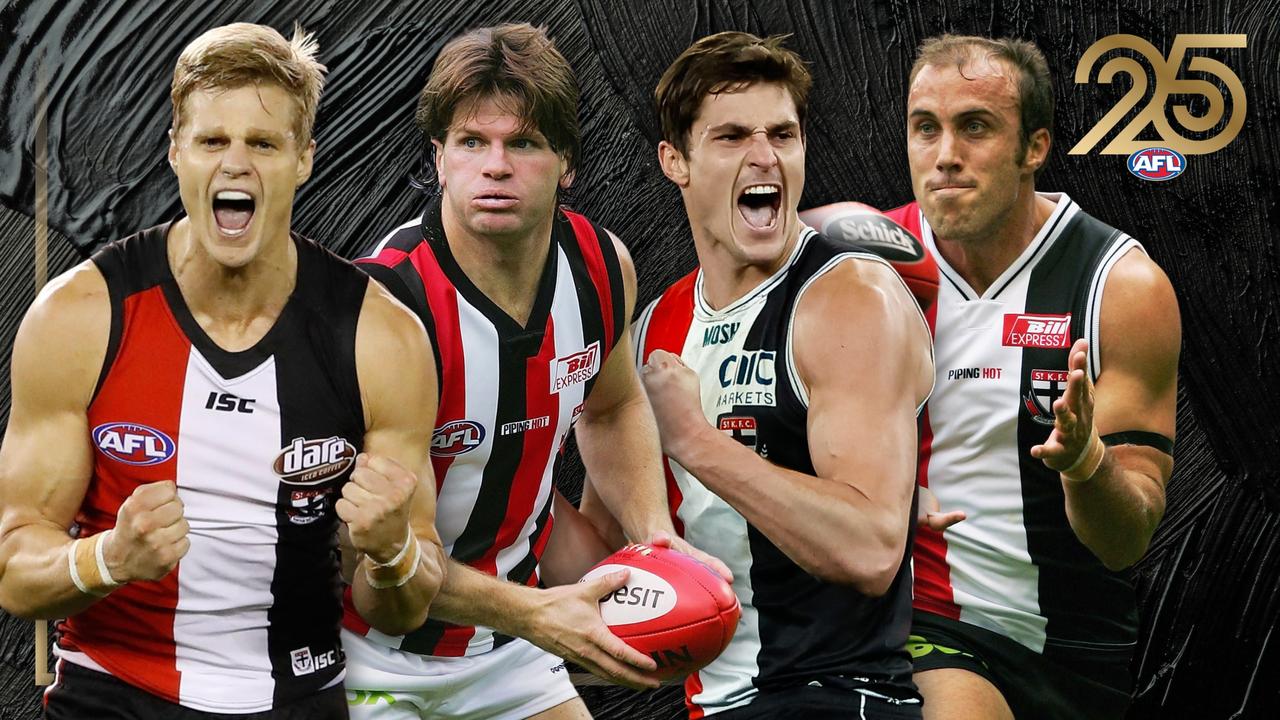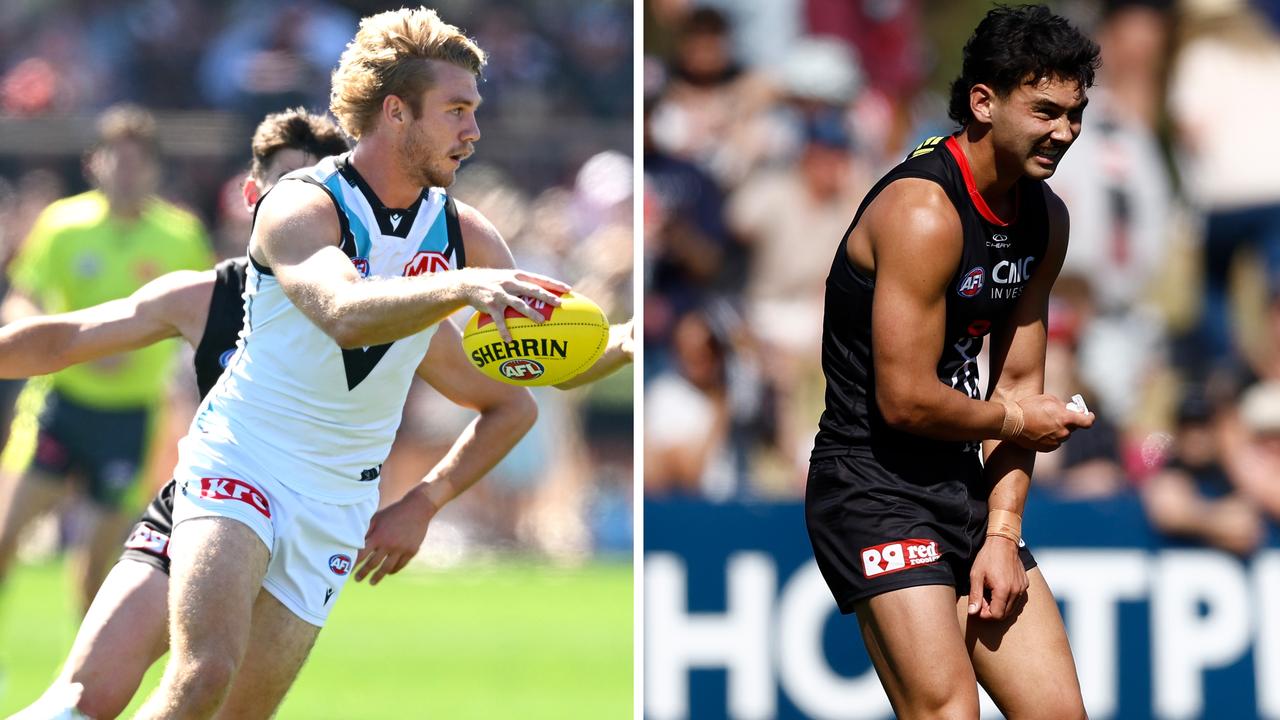Former recruiter John Peake’s first hand account of the draft and selection battles at St Kilda
Ross Lyon’s tenure at St Kilda was one of the most successful yet contentious in modern history, former recruiter John Peake reveals the draft and selection stories behind Cyril Rioli, Tom Lynch, Jack Steven and more.

St Kilda
Don't miss out on the headlines from St Kilda. Followed categories will be added to My News.
Ross Lyon didn’t involve himself a great deal in recruiting discussions in my first two years at St Kilda.
He had a phrase: “Let the cobblers cobble.”
It was a different story when it came to the trade period.
GRESHAM: WHY SAINTS ARE READY TO MAKE MOVE
BUCKY: FREMANTLE TRADE PERIOD ANALYSIS
RUCKS: SAINTS PROBLEM TO KEEP RICHO UP AT NIGHT
2019 DRAW: ST KILDA’S FIXTURE REACTION, ANALYSIS
In 2007, Ross was insistent that we exchange our second-round draft selection to Sydney for Sean Dempster and Adam Schneider.
The following year we again traded out a second-round pick for Farren Ray, although it was Matthew Drain, who had replaced Ken Sheldon as football manager 12 months earlier, who was behind that particular push.
Where Ross exerted considerable draft influence was during deliberations over Cyril Rioli ahead of the 2007 national draft.
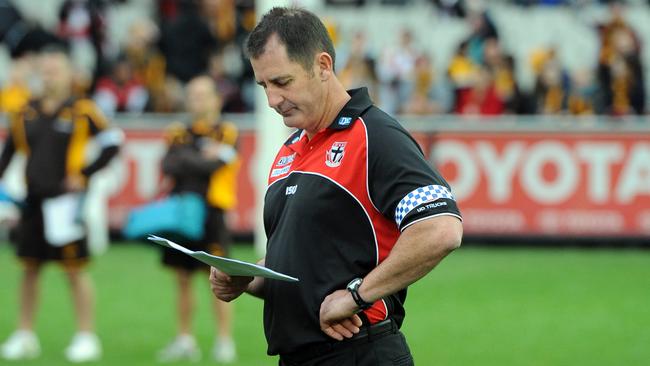
We had selection No.9.
I rated Cyril comfortably inside the top 10. For some reason Ross had the slows on him.
Cyril did not interview well at the draft combine. That said, it is not uncommon for players to present as shy and nervous when grilled by AFL coaches and assorted club officials.
SEE VETERAN LIST MANAGER JOHN PEAKE’S FOUR PILLARS OF RECRUITING SUCCESS BELOW
This is especially so with indigenous players. In fairness to Ross, when he met Cyril for the first time, Cyril was difficult to engage in conversation or elicit much of a response from.
Cyril appeared reluctant or possibly lacked confidence to engage. His responses were limited and little insight into his character was gained.
The psychological testing did not reveal any more of Cyril’s character and therefore it remained an unknown aspect of his profile.
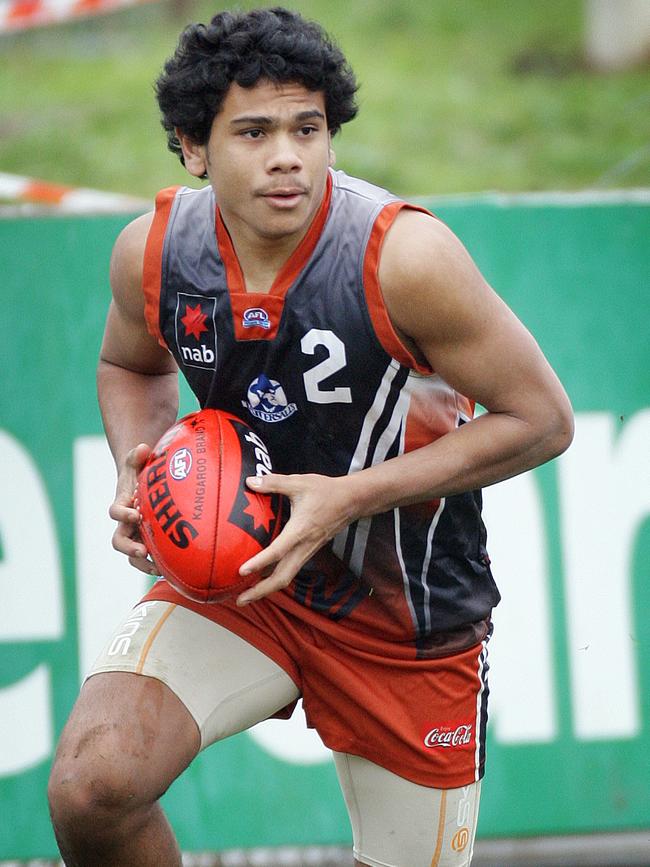

I was overseeing my first national draft and didn’t have any runs on the board. I disclosed my conundrum to a friend. His advice was that I’d be running the gauntlet to use a first-round selection on a player the coach had misgivings about.
With selection nine we chose Ben McEvoy. I rated Ben highly as well. I was also of the opinion that a good ruckman is needed to win finals.
I didn’t mind Tom Bellchambers, but had concerns about his maturity, and Dawson Simpson deserved an opportunity, but not as an early draft selection. Ben and Matthew Kreuzer, who Carlton drafted at No.1, were the only rucks I had confidence in.
I wear the criticism for selecting Ben ahead of Cyril (Hawthorn, pick 12) and Patrick Dangerfield (Adelaide, pick 10), but sleep a little easier now that Ben is a dual premiership ruckman (albeit as a Hawk) and on track to play more than 200 AFL games.
Our next selection after Ben in the 2007 draft was pick 42, which I had targeted for Jack Steven of the Geelong Falcons.
This was based on the assumption that he would still be available. I had researched Jack extensively and the fact that he had only been invited to a state combine suggested that he wasn’t to every club’s liking.
I understood that too, as Jack did have some rough edges. That’s why I was reasonably optimistic Jack would be there at selection 42.
Of course, we had also traded in Adam Schneider from Sydney. Hence, if we drafted Cyril, it would have meant bringing in three smalls together.
In hindsight you would say it didn’t matter as they were all good players, but at the time I was mindful of having a balanced draft.
Ross made no secret that he loved quick and skilful players, which suited me fine. In my first year at St Kilda we didn’t have philosophical differences on the types of players we were considering.

It changed when we selected Tom Lynch at my second draft.
The 2007 season was Ross’ first as a senior coach and my impression was that he hadn’t fully bedded down his game plan.
He then took the team to a preliminary final in 2008 and the Grand Final in 2009.
For St Kilda to win 19 consecutive games that season and lead Geelong in time-on of the final quarter of the Grand Final, was an outstanding coaching effort by Ross.
Unfortunately for the Saints, Shannon Byrnes and Travis Varcoe both had an impact for Geelong in the last quarter and this legitimised an internal view that we had been beaten by pace.
I still maintain that Geelong’s bottom six players were simply superior to ours, but Ross vehemently disagreed. In fact, he became more inflexible with regard to leg speed, which led to conflict between us.
In the case of Tom Lynch, I was convinced he could play and knew he could run.
He wasn’t an aesthetically pleasing athlete or, in the words of a good friend, a “mounting yard special”.

Where Sam Gilbert or Rhys Stanley would glide across the ground, Tom was a little flat-footed.
Upon being drafted in 2008, Tom had made it known that he was setting his sights on a Round 1 debut. Ross perceived this as arrogance, whereas I felt Tom was just ambitious.
Ross didn’t understand Tom and this is where he and I began to fall out.
In the 2008 trade period, Ross and assistant coach Tony Elshaug had been very keen on Carlton’s Brad Fisher, as they wanted a lead-up forward to ease some of the burden shouldered by Nick Riewoldt.
I strongly opposed the idea, as Fisher had been injury-prone and I didn’t believe he had much AFL football left in him.
By this stage Tom was well and truly on the radar and I was able to argue that we could draft the prototype, lead-up player that Ross was seeking. Drain came around to the idea and Ross reluctantly relented, but not before letting me know how disappointed he was in passing up on Fisher.
As time went on, the divide between Ross and I got bigger.
He believed that players needed to serve a three-year apprenticeship, which I agreed with up to a point.
Former Saint and Kangaroo Nick Dal Santo rapt up Ross on Fox Footy’s Open Mike, but acknowledged that he treated young players as virtual witch’s hats at training. It was often a case of “stand over there and don’t get in the way”.
In 2009 Jack Steven was playing consistently good football in the VFL but could not get a look in.
Drain was pushing for Jack and Tom to get games, as he knew they might be needed in finals if there were injuries.
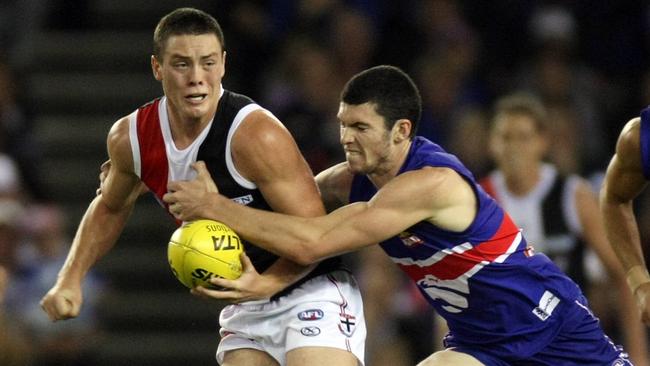
At the same time, Sean Dempster, who was a wonderful servant of the club and became an All-Australian half-back, was improvising as a lead-up forward — the very role Tom had been drafted to fill. It didn’t make sense.
One can’t help but wonder what might have been considering Tom has become the linchpin (excuse the pun) for Adelaide.
As for Jack, he was twice the player of Robert Eddy and by 2010 had more to offer than Andrew McQualter and Brett Peake, but Ross would not entertain playing him.
Ross made me a better recruiter by holding me to a high level of account. I didn’t always agree with his management methods or philosophies, but I came to understand his expectations and worked to these accordingly.
My time at St Kilda certainly helped hone my recruiting strategies.
Ross wanted each recruiter to present to him their draft order.
I had some concerns that this could be divisive, while veteran Saints recruiter John Beveridge was reluctant to commit himself to player rankings or making decisions during the year, and sometimes, until the night of the draft.
This is where he and I had disagreements, although I don’t blame John.
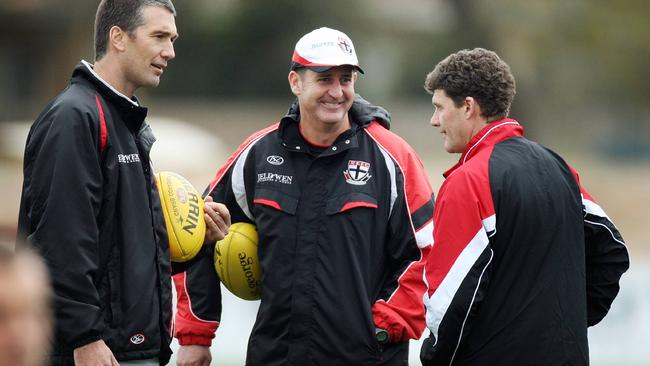
He had worked independently for so long that he found it challenging to all of sudden have to collaborate with others.
The assistant coaches at St Kilda were terrific and I felt wonderfully supported by each of them. In my time we had Stephen Silvagni, Anthony Rock, John Barker, Elshaug, Andy Lovell, Leigh Tudor and Danny Sexton.
The fact that Ross was so relentless and demanding of his staff is essentially what banded us together.
By 2010 Ross was taking more of an interest in the draft and having most of the say. That’s when I decided my time was up.
The final straw came when he ridiculed me for having “burned” first-round selections on slow players (McEvoy and Lynch).
Shortly after I received an email from Greg Hutchison, who had replaced Drain as football manager, informing me that Ross had been placed in charge of list management.
Consequently, my services would not be required during the upcoming trade period and that Ross would basically be calling all of the shots.
I will say that when I resigned Ross tried to talk me around. I took him at his word that he was sincere.
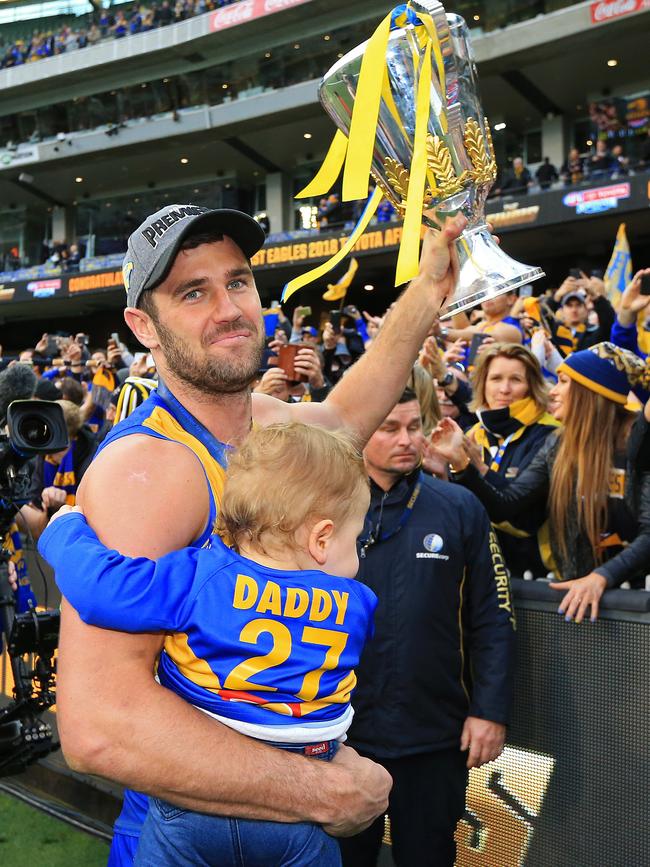

One of my final duties at St Kilda was overseeing the 2010 national draft.
The recruiters had wanted to use selection 24 on Jack Darling, but were overruled by Ross.
He wanted to select runners and had the final say (St Kilda selected Jamie Cripps at pick No.24, the small forward who would go on to be a premiership player at West Coast alongside Darling).
Ross is intelligent. I believe he was a high achiever academically and is meticulous in his preparation and planning. He has taken two clubs to Grand Finals and would be a premiership coach if not for an unwieldy bounce of the ball in the dying stages of the 2010 drawn Grand Final.
My experience with Ross is that he didn’t have great faith in people outside his inner circle. He found it difficult to trust people and it’s largely the reason he micromanaged so much at St Kilda.
As an observer from afar, it would appear Ross is reinventing himself in the way he is bringing through a group of talented young players at Fremantle.
THE FOUR PILLARS OF RECRUITING
John Peake, who is building a manuscript that outlines the skills of recruiting, details his four key planks to drafting successful players.
1. CAN HE PLAY?
This component takes in football skill, ability to read the play and decision making.
2. MENTAL STRENGTH
Can the player stand up to the constant pressure of the work needed to prepare and perform each week? Is the player competitive by nature? Has he overcome a setback, shown resilience?
3. PHYSICAL MAKE-UP
Will the player’s build and/or strength help or hinder his game?
4. ATHLETIC ABILITY.
How does the player rate aerobically, for speed and agility? The weighting applied to each athletic trait is relative to the role the footballer is required to perform. High football IQ will invariably compensate for a lack of leg speed.
THE SIGNIFICANCE OF THE FOUR PILLARS
Pillar 1 has the most influence on how good an AFL player he will be. If a player does not rate very good or high in Pillar 2 then I believe he will not make it. Strong ratings in Pillars 3 and 4 can offset some deficiencies in Pillars 1 and 2, which are still the most important.
Originally published as Former recruiter John Peake’s first hand account of the draft and selection battles at St Kilda

